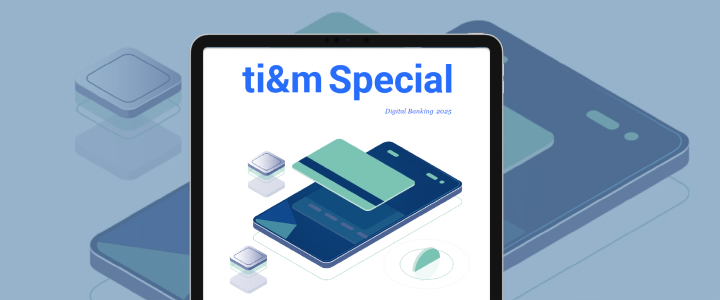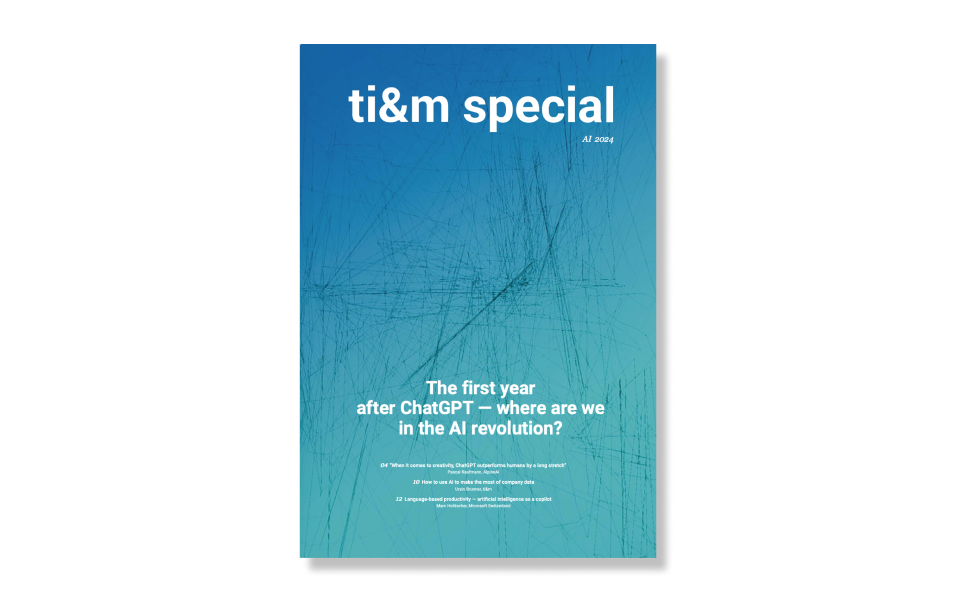Jürg, SUISA’s business is largely based on defining and maintaining data relating to works, and collecting and managing usage data. Which challenges do you face in managing these data?
To understand our particular challenges, we need to talk about the history of music rights. 150 years ago, music use was limited to live performances in a concert setting – the origins of today’s events business. The development of the first wax cylinder meant copyright suddenly also included mechanical reproduction. A new product was born, which grew enormously with the development of shellac and vinyl records, then later CDs. The demands on the collection and transfer of data grew too. When streaming was introduced, this transformed the market again. Music fans no longer buy a small selection of the music that’s available and listen to it in their own living rooms. Now they can choose freely from a massive catalog of 40 to 60 million works – wherever they are, 24/7. So we are in an environment that’s constantly being redefined thanks to technological advances. The scope and social significance have also increased hugely. Listening to music has gone from a pleasure reserved for the elite to a mass phenomenon – with an enormous range of works at a price that everyone can afford. The complexity increases again when you consider another dimension: the international context in which the music rights are recorded, maintained and claimed. For example, if a Swiss artist is played in the US, bilateral agreements and the subsequent data exchange are required to ensure that the royalties can be paid out in Switzerland.
“Usage forecasting lets us predict the use of individual titles. We can predict cash flows,so our members can make financial plans with greater certainty”– Jürg Ziebold, SUISA
What opportunities do new technologies bring in this environment, particularly artificial intelligence?
The storage and rapid exchange of data are less of a problem these days. Our main challenge is to ensure the quality of the huge amounts of data. It’s almost impossible for our employees to identify deviations and unusual cases in the data on this scale.We need to do this to offer the artists – our members and clients – the best possible value for their rights. So we work with ti&m and use machine learning processes: During the initial stage, online reporting by the major streaming companies is checked for anomalies using machine learning. Then we extend that to include additional usage data such as plays on the radio, or use in performances and events. Another application available to members in our new member portal is usage forecasting for individual titles. This lets us predict cash flows and manage risks in a targeted way, so our members can make financial plans with greater certainty. On the basis of these projections, for example, publishers can develop clearly defined marketing and sales measures in specific regions. Machine learning methods are also used to reliably extrapolate past usage in the context of the overall data volume. The main challenge in implementing the project was processing the huge quantities of data quickly. Working with experts from ti&m, we used special techniques to guarantee prompt access to the projections and analyses. Ultimately, we succeeded, and employees and members could access the information within 24 hours.
How much do machine learning applications change your everyday work, such as internal work processes or the make-up of your team?
Some fields of activity change, operations shift, some tasks become obsolete or new ones arise. Overall we reach a new level of quality which helps us to efficiently and effectively process the growing amounts of data. With anomaly detection, for example, the whole inventory is analyzed. This means we can omit the laborious recording and evaluation of samples. But we do then have significantly more anomalies to examine. So with the same number of employees, we can ensure higher quality across larger data volumes. We expect this effect from other AI applications as well.
“To offer artists the best possible value for their rights, we need to be able to identify deviations and unusual cases in the data. Due to the huge amounts of data, it’s almost impossible to have effective anomaly detection without AI”– Jürg Ziebold, SUISA
That’s a good cue – do you have any other AI-based projects planned?
Yes. Over the next year, we’ll be working with ti&m to create an initial minimum viable product (MVP) that will automatically record conversations with customers. Like all service providers, we record all contact we have with a customer, particularly phone calls. Usually each contact creates a ticket for a follow-up action. At the moment our staff record this manually. That takes time, and the resulting records differ widely in terms of quality and level of detail. Our aim is to use a large language model (LLM) such as ChatGPT. This will transcribe customer conversations and then create summary records of consistent quality. This is planned to work for all Swiss languages and dialects, even if they’re used interchangeably during the call. And all in real time, so that service employees receive the record immediately after finishing the call and can make changes or add notes. We are also integrating a chatbot into our member portal. This will communicate autonomously with our members and provide them with the most up-to-date information from our internal knowledge base. We still need to gather experience to ensure the quality of the responses before we make it available as a service. At the end of the day, our members needs to be able to rely on what it tells them.
“In the coming months we’ll be using other AI-based applications including automatic transcription of customer calls and integrating a chatbot into our member portal”– Jürg Ziebold, SUISA
To round off, let’s take a little look at another trend in data management. The hype around blockchain seemed to have fizzled out, but the arrival of NFTs, in the context of digital artworks, seems to have reignited it. To what extent does that affect your business?
We’ve been looking at blockchain and its application opportunities for a long time now. Three years ago, we worked with ti&m in our first specific workshops to assess our entire processing chain. We were looking for the potential to use blockchain technologies. And we’ve just finished an in-depth study of all activities within the international music industry relating to blockchain applications. We can see some interesting uses, such as for consistent metadata management for musical works, leading to a better quality catalog of works. The tokenization of music rights is another example. This gives the rights holders new monetization opportunities. However, in our view, many of the initiatives to date by copyright collectives in neighboring countries are driven more by marketing rather than offering members real benefits. I fully expect it to provide key ideas for our business.





